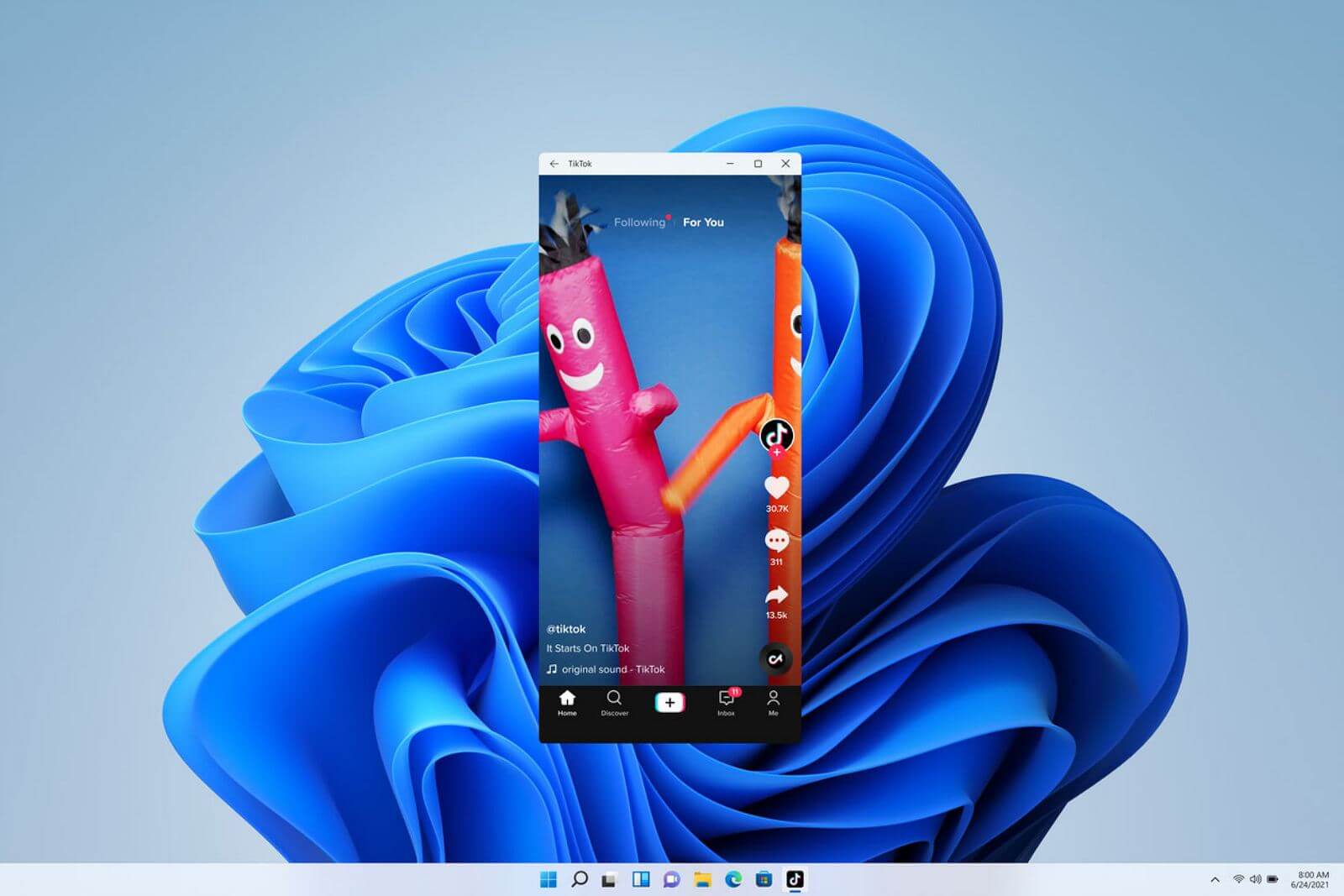
- Windows 11 will include support to run Android apps.
- Microsoft is partnering with Amazon and Intel to the Amazon Appstore and Intel Bridge technology to bring the apps.
- A Windows Subsystem for Android will be available to run the apps.
- Android apps will work on computers using Intel, AMD, and ARM CPUs.
- Windows 11 will include the ability to sideload Android apps.
Alongside the massive UI design overhaul and many new features, perhaps the biggest surprise coming to Windows 11 is support for Android apps. Yes, you read correctly. The next version of the OS will run Android apps, the same ones (for example, TikTok, Snapchat, Instagram, etc.) you run on your Android phone. And what’s more interesting is that the apps will run whether you have a system with Intel, AMD, or Qualcomm processor.
However, the implementation is not so simple since there are many things going on behind the scene for this to happen. For starters, to bring Android apps to Windows, Microsoft had to partner with Amazon and Intel. Amazon will provide the apps from Amazon Appstore, and Intel will provide its Bridge technology to run the apps, but this Intel solution won’t be required on AMD or ARM systems.
In addition, Windows 11 will get a Windows Subsystem for Android (WSA) (via ZDNet) to provide a virtual environment for the Android Open Source Project (AOSP) to run Android apps without the need for Google Play Services support.
However, at least during the initial rollout of the feature, no every Android app from the Amazon store will run on Windows 11, but more apps will be added to the compatibility list in the future.
Installing Android apps in Windows 11
Then there is the experience of downloading and installing the apps. Although it’s not clear yet, it appears that you will first need to download and install the Amazon Appstore and sign in with your Amazon account. Once you do this, you will be able to use the Microsoft Store to download and run Android apps in Windows 11.
However, these additional steps seem that will only be required to set up the experience. After the initial setup, you would simply get the apps from the new Microsoft Store.
Android app sideload will be supported
Furthermore, Windows 11 is also said to include the ability to sideload Android apps without a store, which indicates that Microsoft won’t just be using Amazon. However, it brings more questions on how the company plans to make this feature available.
Although adding the ability to install apps without a store allows users to run even more apps, it is unclear what will be needed to make this happen, which is not so simple in other platforms, such as on Chrome OS. Also, it brings up the question of the sources that users will use to obtain the packages.
But maybe the idea of sideloading Android apps into Windows 11 is for developers to test their apps rather than allowing users to install apps from any source.
Regardless of how the feature will work, it’s clear that Microsoft is set to bring even more apps to Windows 11 without developers having to redesign their apps. The company is also expected to share more details in future announcements.
